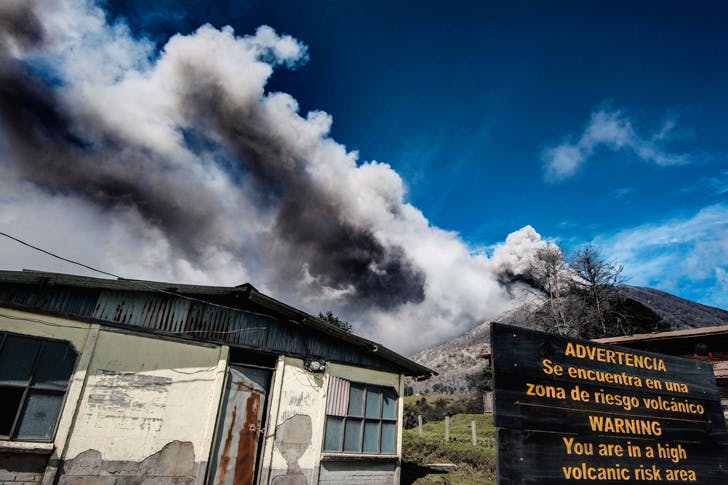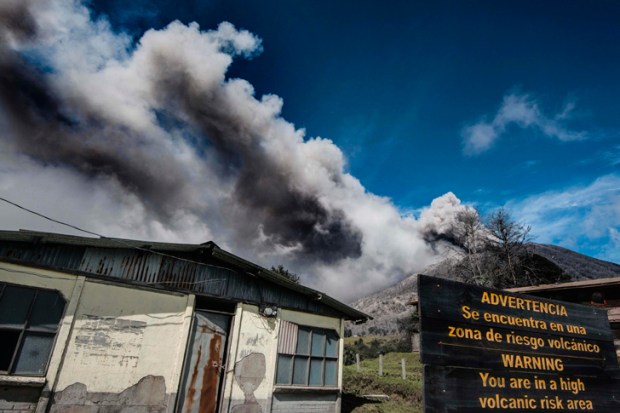I grew up believing in a fundamental truth that the North Pole was the magnetic pole. So, of all the changes affecting our planet now, I can think of none more amazing than the fact that the magnetic north is moving towards the south pole. And it has done this every few thousand years. Currently it is heading south towards Siberia at about 40 km/p.a. which is actually speeding up from the average 10km/p.a. of the last 100 years. The European Space Agency call this a Solar Magnetic Reversal, or ‘flip’. What is driving this is has a lot to do with the flow of magma in the Earth’s molten crust and the relationship with the sun. The New Scientist reports that under the Arctic ‘a molten jet of iron nearly as hot as the Sun is picking up speed… (it is) some 420km wide and is now circulating westward at between 40 and 45 kilometres per year towards Siberia’. Using satellite information Phil Livermore of the University of Leeds notes this molten jet stream of magma ‘is dragging the magnetic field with it’ (New Scientist). What this means is that the magnetic shield effect is lessening in the Arctic. The strength of the earth’s magnetic field (which is strongest at both poles) acts as a shield protecting earth from solar radiation which, along with our planet’s ‘tilt’ is why the poles are covered in ice. With the magnetic pole moving south it is taking some of this shield with it. Information comparing old shipping data with recent satellite data has found that the total magnetic field of earth has reduced by about 15 per cent over the last 200 years.
Deep under the Arctic Ocean, the Gakkel Ridge, a fault line comprised of a chain of high active volcanoes, is spreading at a few centimetres per year. Recent deep ocean surveys have discovered that despite the huge pressure of the Arctic Ocean above this fault, there is still evidence of active lava and pyrolytic deposits on the adjacent seabed. The suggestion from Jennifer MacKinnon, ArcticMix Chief Scientist of the Scripp Institution of Oceanography, is that this local seismic activity will counteract the containment of this warm water by the extreme density of the water at this level by creating eddies that will mix this warm water with upper water layers. So could the Arctic be being heated by reduced protection from the sun from above and molten lava from the ocean floor? To quote McKinnon: ‘the strength of the heat coming from below the surface has been as strong as the heat coming down from the sun’.
With the magma mantle at the Arctic behaving like a jet stream and taking the magnetic field with it and all that that implies, what are the consequences? There are waves that reverberate through the earth’s aesthenosphere (which includes the outer plastic, superheated layer of magma and lies below the lithosphere and the Continental Crust). Some, called ‘body waves’, swell from Earth’s core. Others, called seismic waves, circulate and move laterally shifting tectonic plates, widening or closing rifts and causing earthquakes and volcanoes. Between the two they can grow islands and mountains or sometimes ‘swallow’ landscapes. Both forms of waves are based on the transference of thermal energy (from hotter to cooler). ‘Earth’s heat budget, which measures the flow of thermal energy from the core to the atmosphere, is dominated by mantle convection… and drives most geological processes’ (National Geographic Encyclopaedia).Then to further compound this it is now established that the earth’s core spins at a very fast rate towards the east while the much larger mantle spins slowly towards the west. Phil Livermore calls this a balancing of equal and opposites. In fact this westward drift of the earth’s magnetic field was first noticed by Edmund Halley (of the comet) in 1692. So our dense magnetic core is sashaying its partner, the molten mantle, around the dance floor and now seems to be taking land masses with it. Combine this with a magnetic field estimated to be 15 per cent weaker than it was 200 years ago and we have a recipe for a solar ‘flip’, and with it a lot of seismic activity, especially at tectonic plate margins and fault lines.
During 2016 we have had multiple earthquakes – known as a ‘swarm’ recorded around the Pacific Ring of Fire. Since October 1st there have been significant earthquakes registering over 5.5 in Japan, Ecuador, Banda Aceh, Southern Chile, Chile/Argentina, Peru, Guatemala, PNG, Hawaii, Vanuatu, The Solomon Islands, Fiji, New Zealand, Indonesia, Alaska, California, Sumatra, Brazil, and the Mariana Islands. Beyond this Ring of Fire, earthquakes have been recorded over the same period in Tajikistan, Romania, Macedonia, Italy, Nicaragua, Trinidad and Tobago and Russia. In total there were 52 major earthquakes in these 3 months, while the US in 2016 registered a total of 1,904 and Chile 546. Even Australia recorded 10 smaller earthquakes in these three months from the wheat belt of WA to Bowen in Queensland. Accompanying these earthquakes has been a raft of volcanic activity from Mexico to Bougainville, with a pumice raft in the Pacific indicating a subterranean volcano in the ocean, and continuing volcanic activity near the Aleutians, Costa Rica, Central Kamchatka (Russia) and Alaska. Most importantly this massive seismic activity of earthquakes, tsunamis and volcanoes has occurred predominantly along one side of the planet. Shorelines have been lifted, cracks opened, magma spurted, volcanoes plumed, land subducted and inundated. So the question is: could the recoil from these multiple, powerful and ongoing shocks be changing Earth’s tilt?
When Milutin Milankovitch was imprisoned during WW1 he continued his work into creating a mathematical formula for the tilt of Earth and its relevance to seasons and Ice Ages. His first tome, A Mathematical Theory of the Thermal Phenomena Produced by Solar Radiation, linked the relationship of the sun’s radiation, earth and its tilt and climate changes. His 1941 opus, Canon of Insolation and the Ice Age Problem, completed his theory and equations that proved earth has a changing tilt to its vertical axis of between 22.5° and 24.5° across a 41,000 year cycle. This is now recognised as the Milankovitch Cycle and, as of 2015, the tilt was at 23.5°; relatively stable for 12,000 years. If it reduces to 22.5° we will have an Ice Age and if it increases to 24.5° we will have an increase in global temperatures.
Last month were more reports of abnormally low solar activity pointing to the end of our current interglacial cycle and the possibility of a little Ice Age. So will 2017 further ‘the perfect tsunami’ confluence of lower solar radiation, increased flow activity at the magma level, a reducing global magnetic field allowing for a flipping of the magnetic pole and a change in the tilt of planet? Stay tuned, but please not to any institution with the word ‘CLIMATE’ in its title.
Got something to add? Join the discussion and comment below.
Get 10 issues for just $10
Subscribe to The Spectator Australia today for the next 10 magazine issues, plus full online access, for just $10.














Comments
Don't miss out
Join the conversation with other Spectator Australia readers. Subscribe to leave a comment.
SUBSCRIBEAlready a subscriber? Log in